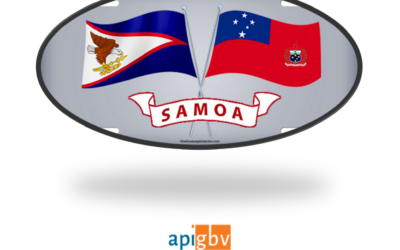Advocacy for Pacific Islanders
Demographics and Identities
The Pacific Islands consists of 14 sovereign states and 11 collectives. They can be classified by three ethnogeographic groupings: Melanesia, Micronesia, and Polynesia. The Philippines and Indonesia are generally not considered part of the Pacific Islands, although they fall into larger regional classifications such as Australasia, Oceania, or the South Pacific. U.S. territories in the Pacific include Guam, Northern Mariana Islands, and American Samoa.

The U.S. Census Bureau groups Pacific Islanders with Native Hawaiians as ‘Native Hawaiian and Other Pacific Islander’ (NHOPI). In the U.S., NHOPI ethnicities include Carolinian, Chamorro, Chuukese, Fijian, Guamanian, Hawaiian, Kosraean, Marshallese, Native Hawaiian, Niuean, Palauan, Papua New Guinean, Pohnpeian, Samoan, Tokelauan, Tongan, and Yapese. As of 2015, there were roughly 1,260,000 NHOPIs in the U.S. (including single-race and multi-race/multi-ethnic NHOPIs). Though NHOPIs make up less than 1% of the U.S. population, they are one of they fastest growing groups, having increased 30% since 2010.
Languages spoken in the Pacific Islands include languages in either the Paupan or Austronesian language families (see Thomas E: Domestic Violence and Sexual Assault in the Pacific Islander Community (2017) for more information). In the U.S. most Pacific Islanders are English proficient, with 14% of the Pacific Islander American population having limited English proficiency in 2012.
Gender-Based Violence
The intersectionality of history, colonization, culture, identity, community, systems, and geography in Pacific Islander communities has an impact on the dynamics of and interventions for domestic violence, sexual assault, family violence, and trafficking. Advocacy for survivors and access to resources and benefits depends on whether they are U.S. citizens, U.S. nationals, immigrants, or COFA migrants. Pacific Islander categorizations – with Asians or as Native Hawaiians and Other Pacific Islanders (NHOPI) – can, and have at times, overlooked or tokenized the richness of their diversity and the differences of their experiences.
Statistics
- An estimated 60-80% of women and girls in the Pacific Islands will experience physical and/or sexual violence in their lifetimes, although the rates vary across states, territories, and cultures.
U.N. Women: Ending Violence Against Women and Girls: Evidence, Data and Knowledge in Pacific Island Countries - Of 741 ever-partnered men (18-49 years old) surveyed in Bougainville, Papua New Guinea, 80% had perpetrated physical and/or sexual intimate partner violence, 62% had perpetrated physical partner violence, and 59% had perpetrated partner rape.
Partners For Prevention: Why do Some Men Use Violence Against Women and How Can We Prevent It? - According to a 2016 community needs assessment of Pacific Islanders in Utah, 81% of respondents knew at least one person in their community that needed help with an issue related to violence, most respondents knew of 3-5 people.
Pacific Island Knowledge to Action Resources (PIK2AR): Utah Pacific Islander Community Assessment (2017)
Resources
Pacific Diaspora in the USA
This research report addresses the scarcity of data regarding Pacific Islander communities and presents research on the diaspora in the U.S. It seeks to understand who is the Pacific diaspora in the U.S., where they came from and where they are located; to examine the...
Samoa Community Project: Year One Report (2021-2022)
The Samoan Community Project builds on API-GBV’s Pasifika Power & Control Wheel Translation Project, which sought to adapt the well-used tool to Pasifika languages and cultural/community contexts. This report highlights the needs to unpack the Samoan words...
Pasifika Power & Control Wheel Translation Project, 2021
This project aimed to translate and develop educational resources and tools on GBV in indigenous Pasifika languages. The project aims to empower individuals, families, community-based and system responders, allied professionals, and the community-at-large with culturally responsive resources to address and prevent GBV in Pasifika communities. Resources include project report and glossaries and tools for Samoan, Chuukese, and Native Hawaiian communities.
Defining an Effective Response to DVSA in American Samoa
By American Samoa Alliance Against Domestic & Sexual Violence
A quantitative and qualitative comparison of the service provision and overall response to domestic violence and sexual assault in American Samoa. This project examines the gaps between what services are available and what victims report needing; it aims to answer, “What does an effective response to domestic violence and sexual assault look like in American Samoa?”
Defining an Effective Response to DVSA in American Samoa
By American Samoa Alliance Against Domestic & Sexual Violence
A quantitative and qualitative comparison of the service provision and overall response to domestic violence and sexual assault in American Samoa. This project examines the gaps between what services are available and what victims report needing; it aims to answer, “What does an effective response to domestic violence and sexual assault look like in American Samoa?”
Behind closed doors: How domestic violence among Pacific Islanders remains in the shadows, 2018
Published by Peninsula Press
“In the wake of noteworthy sexual assault allegations in the government and Hollywood, the nation is being forced to reckon with the pervasiveness of gender-based violence. But for Pacific Islanders, a population that is small in the U.S. even for a minority group, the prevalence of assault and abuse is easily overlooked by agencies that serve entire cities or counties.”
Other Resources
AAPI Data: demographic data on Native Hawaiians and Pacific Islanders
American Samoa Alliance Against Domestic and Sexual Violence
Guam Coalition Against Sexual Assault & Family Violence
Hawai’i State Coalition Against Domestic Violence
Northern Marianas Coalition Against Domestic and Sexual Violence
Pacific Islands Knowledge 2 Action Resources (PIK2AR): violence prevention resources and KAVA Talks (Kommitment Against Violence Altogether), a male domestic violence advocacy group
U.S. Office of Minority Health: Profile on Native Hawaiian/Other Pacific Islander resources and Resources on Violence Related Trauma
U.N. Population Fund: Violence Against Women – Regional Snapshot (2017)
U.S. Census: The Native Hawaiian and Other Pacific Islander Population: 2010 (2012)




